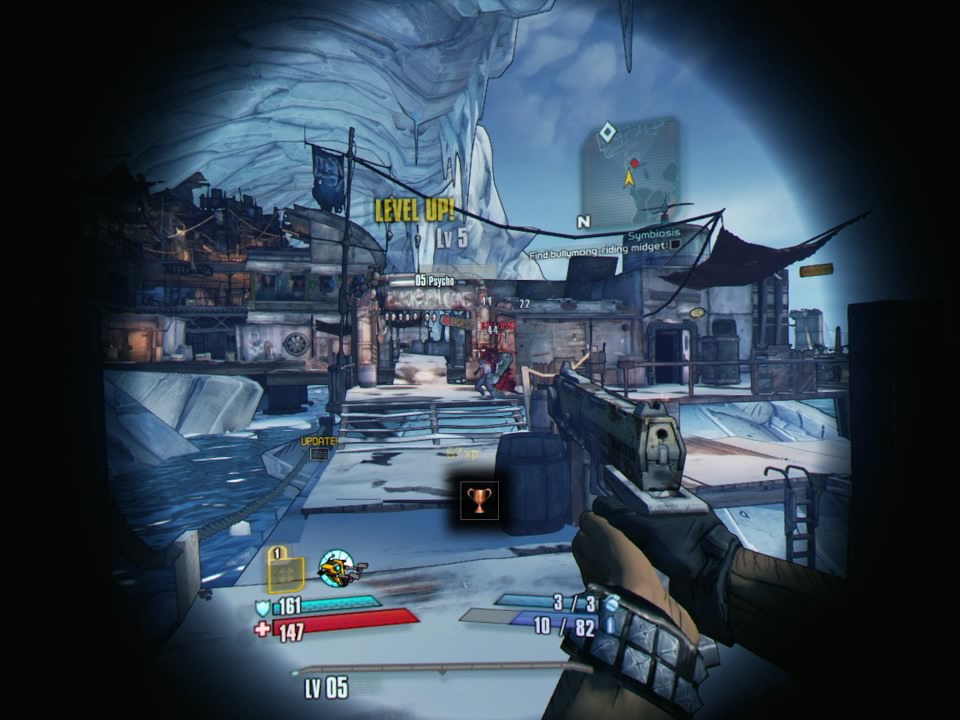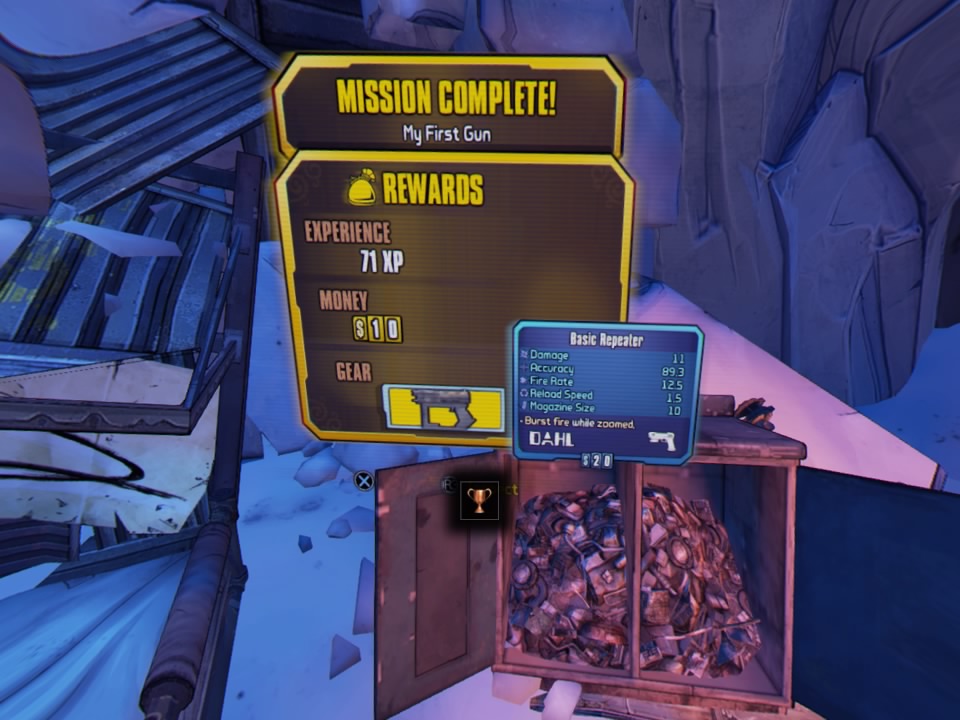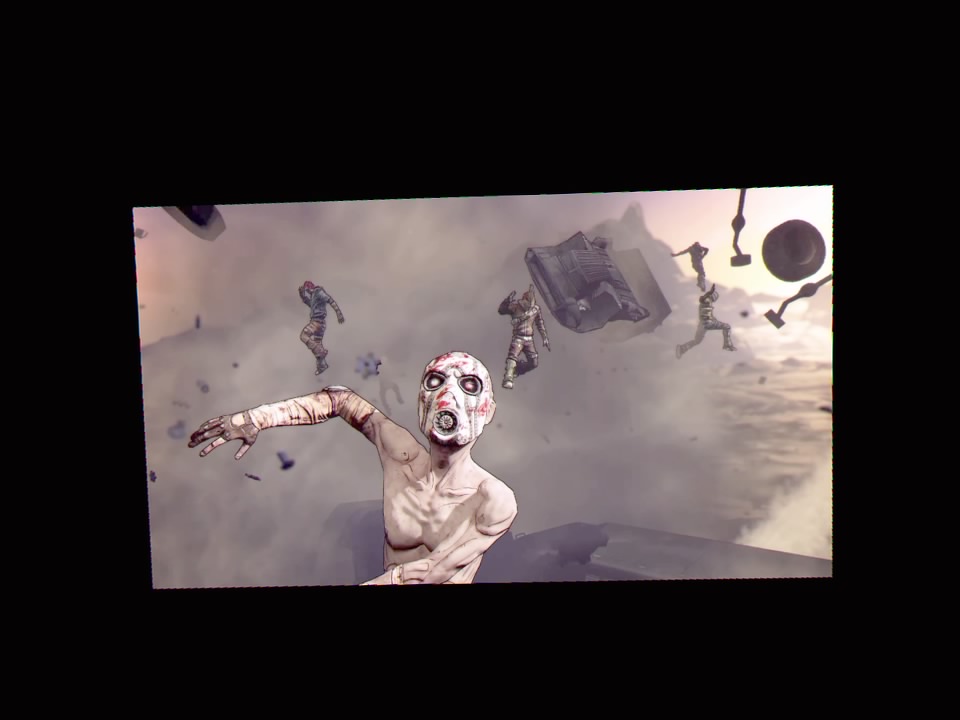At this point in the console generation I’ve finally come to grips with the fact that re-releases are inevitable. Very few brands have embodied this sentiment more than the Borderlands franchise. After initially launching Borderlands 2 on PlayStation 3 and Xbox 360 way back in late 2012, the second installment has since been ported to every platform short of the toaster oven, to varying levels of success. This time around, the target is everyone’s favorite under-powered and criminally under-appreciated headset, the PSVR. Is Borderlands 2 VR the shooter that finally takes Sony’s platform to the next level, or are we being treated to an unfortunate redux of their much-maligned Vita release?
Beautiful Views
It’s fairly safe to say we’ve likely already seen the pinnacle of the PSVR’s capabilities, at least in a visual sense. While there have been plenty of games that look fine on the hardware, there are a select few that can be considered visually impressive. One thing that these handful of showcases shared in common was a unique aesthetic that steered well clear of photo realism. Luckily, if you are in the countless masses that have consumed Borderlands 2 in one of its umpteen prior incarnations, you know that the shooter is about as far from realistic as you could possibly get. The cell-shaded, graphic novel inspired presentation is a perfect marriage with the capabilities of the headset.
It’s very obvious that some serious thought has been put into how to make the game best operate in VR. To see a perfect example of their efforts, take a long gander at the options menu. There are countless ways to tweak the presentation and controls to best suit the players preference. Everyone’s body reacts differently to VR, so there are numerous options for how to strafe, rotate, or even aim. These get even hairier when considering that the game supports both PlayStation Move and standard controller. It’s also worth noting that as of right now the Aim controller hasn’t been shown any love. I’m holding out hope that this could come in a future patch.
Regardless of whether you are using Move or standard controller methods, it would be hard to say that either felt straightforward or approachable. I preferred to stick with my standard DualShock 4 setup, which makes sense given that it’s how I played it originally. In this configuration the left stick is mapped to the standard forward and backwards navigation, as well as strafing left and right. The right stick is then used to control the camera’s rotation left and right. As for the more fine-tuned aiming, you actually use the PSVR headset to move the position of the reticle, which always remains stationary in the center of the screen. The closest comparison I could arrive at would be if Cyclops from the X-Men had an entire arsenal attached to his noggin. It was quite odd to say the least.
Hardly Moving
Using the Move controllers are where things get a bit odder, due to the lack of any sort of an analog input. As you might imagine, the right controller is used to aim and fire weapons. The left controller was used to control the left hand and also manage forward and backward locomotion. There are several different configurations for how you handle rotation and jumping, so it’s essentially up to the player to experiment and determine what their body can tolerate. What’s most important is to spend a decent amount of time experimenting with the rotation, because this is ultimately where a vast majority of the seasickness will arise. Sadly, it took me several hours of gameplay before I found a configuration that quelled my crying innards.
A final new mechanic added exclusively for VR is the new BAMF Time. And before you ask, no, it doesn’t stand for what you think it does. That is Gearbox’s story and they’re sticking to it. Allegedly this is supposed to stand for “Bad Ass Mega Fun Time.” Simply put, these are just brief spurts where players can slow down the action for easier aiming and maximum bloodshed. It certainly isn’t anything groundbreaking, but it helps when the action grows especially hectic.
Despite all of the foundational changes that have been made to the core framework of the game, the vast majority of Pandora has remained relatively consistent with the original release. There are still four different vault hunter classes, there’s still one especially surly chap hell-bent on playfully badgering you into submission, and there are still ancillary characters that ooze amusing personality from every perceivable orifice. I’ve said it before, but if certain games can charm the pants off of you, it’s probably best that you play this when you’re home alone. It’s that damn captivating.
Every aspect of this already immersive world is only augmented through the implementation of VR. The ability to turn your head a full 360 degrees and still be enveloped in the unique presentation makes the experience even more appealing. One element that especially stood out while exploring was how well the sound design plays into the overall presentation. The directional sound does a fantastic job of positioning effects so that if you quickly whip around, enemies will be exactly where you’d expect them to be in real-life.

Haunted by the Past
While there’s been substantial focus put into making the gameplay as immersive as possible, the cutscene presentation undermines this to a catastrophic level. As soon as a cinematic is triggered, players are tersely yanked from the first-person perspective that every other mechanic tries so valiantly to reinforce. This happens when the decidedly two-dimensional pre-rendered cinematics play out as if being watched on the screen in a theater. Then, once the clip is completed, there’s a jarring flash and the first-person camera and complete control is once again restored. If there had been some sort of a fade-in and fade-out between animated sequences this abrupt interruption might not have pulled me out of the experience so violently. Evidently this is yet another case of design decisions that were perfectly acceptable for traditional presentation mediums that do not translate well to a VR world.
Part of what made the Borderlands 2 so entertaining the first time around was its ability to deliver vastly different experiences for each character class. What made it even more alluring was partying up with a squad of friends to see the interplay between each class. Unfortunately, following the downward trend of the Vita version, which only allowed two player co-op, this time around there are no multiplayer options whatsoever.
I completely understand how multi-console multiplayer sessions would be a technical and logistical nightmare for the development team, especially when figuring out how to do so in a way wasn’t disruptive to the already-fragile VR ecosystem. All it takes are a few dropped frames and the entire experience can be turned upside-down, both literally and figuratively. However, given how fundamental co-op was in each subsequent release in the franchise, it’s disappointing that they would straight up abandon the functionality entirely. Sure, Gearbox’s target audience has likely already experienced this in a previous incarnation, but that is really no excuse to deprive newcomers that same privilege. To call this a missed opportunity is to undersell how enticing the game is as a communal experience.

In another dubious choice (at least at the time of this review’s publication) there are currently no plans to release any of the Borderlands 2’s impressive back-library of DLC. This choice is somewhat more understandable considering that there are a whopping nine mini-campaigns. That said, all previous additions were included as part of the Borderlands: The Handsome Collection. Hell, even a select subset of the add-ons were made available on the Vita for Christ sake. Obviously, the publisher doesn’t want to commit to any additional post-release support without knowing how this version will sell. However, it’s hard to shake the feeling that this doesn’t bode well for their sales projections, if it’s not worth their while to port over content that’s already available on the PlayStation 4 in a different package.
Despite my desire to scream Borderlands 2 VR’s praises from the mountaintop, objectively speaking, the overall package is a bit of a mixed bag. We already knew that the game was fun as hell, and that still remains true while the visor is on. However, odd control schemes, lack of core gameplay features from previous installments, and unfortunate legacy design decisions make this holistically feel like an inferior experience. If this is your first chance to explore Pandora, it’s worth the journey, but if you’re planning a return visit, you’d probably be better off firing up a previous version.
Borderlands 2 VR review code provided by publisher. Version 1.01 reviewed on a standard PlayStation 4. For more information on scoring please see our Review Policy here.
-
Visually, the game is a perfect fit for the PSVR's capabilities
-
It's Borderlands 2. We already know it's fucking great!
-
The sound design continues to be outstanding in VR
-
Every control scheme felt unnatural
-
Cinematics completely interrupted the immersion
-
No CO-OP!? No DLC? No deal.
Borderlands 2 VR Review
-
Borderlands 2 VR Review

-
Borderlands 2 VR Review

-
Borderlands 2 VR Review

-
Borderlands 2 VR Review

-
Borderlands 2 VR Review

-
Borderlands 2 VR Review

-
Borderlands 2 VR Review

-
Borderlands 2 VR Review

-
Borderlands 2 VR Review

-
Borderlands 2 VR Review

-
Borderlands 2 VR Review

-
Borderlands 2 VR Review

-
Borderlands 2 VR Review

-
Borderlands 2 VR Review

-
Borderlands 2 VR Review

-
Borderlands 2 VR Review

-
Borderlands 2 VR Review

-
Borderlands 2 VR Review

-
Borderlands 2 VR Review

-
Borderlands 2 VR Review

-
Borderlands 2 VR Review

-
Borderlands 2 VR Review

-
Borderlands 2 VR Review






